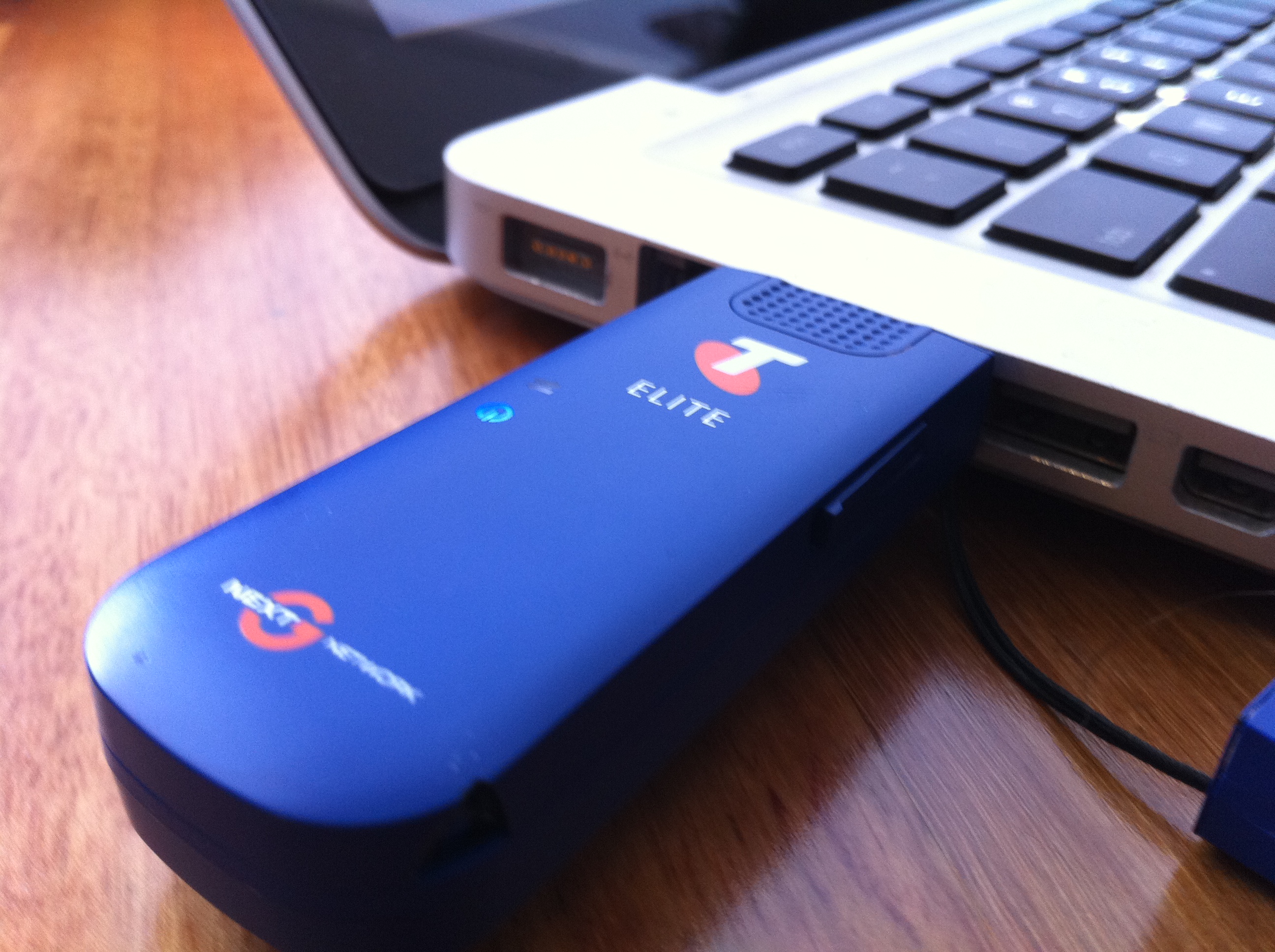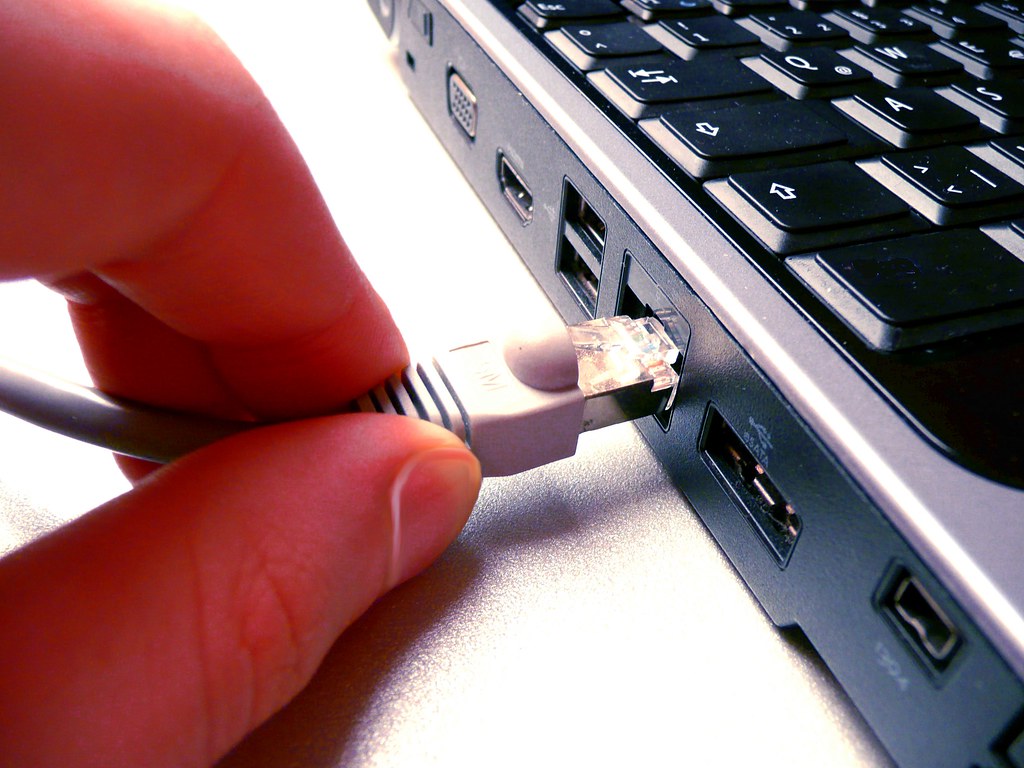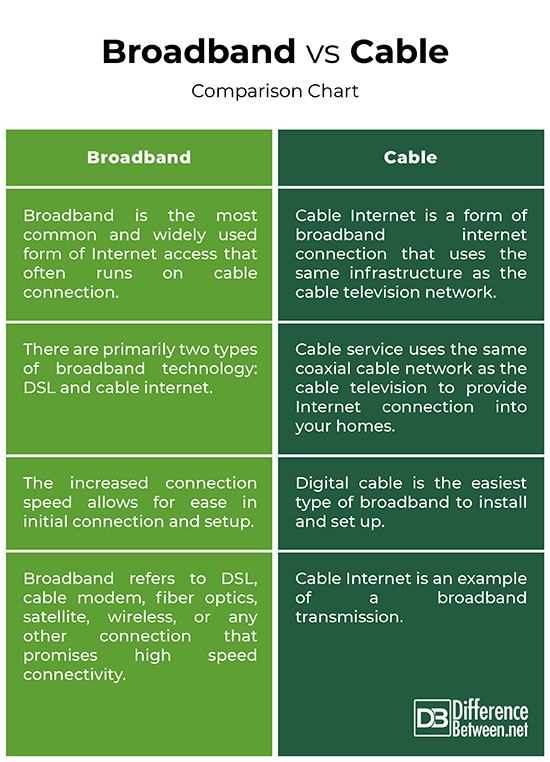Difference Between Broadband and Cable
The Internet plays a pivotal role in our lives. In fact, Internet has become more of a necessity these days. Not only it is the most important part of communications and work, but it is also the primary source of information and news, like what’s happening around. The Internet is now one of the most effective media that has already reached into all areas of our society, from telecommunications to transportation, education to healthcare, business to finance, among others. The Internet is a vast treasure trove of information. This means you can look up for just about anything or anyone you can think of on the Internet. You can find any type of information on just any subject you want or anybody you want with a few keystrokes. Your Internet is one of these three: cable, DSL or fiber.

What is Broadband?
Data signals can be sent over a network in two ways: broadband and baseband. Baseband signaling sends a single signal at any given instant, whereas broadband signaling sends multiple signals on separate frequencies. That being said, cable television is an example of a broadband transmission. A single piece of coaxial cable carrying multiple signals comes into your home and a small box enables you to select specific channels. Broadband creates these separate channels through a process called frequency division multiplexing.
The term broadband is widely used to refer to high speed Internet access. Broadband provides users with always-on, high speed connections to access the Internet and transfer data.
Unlike narrowband, broadband does not tie up a consumer’s phone line, plus it enables access to high bandwidth applications, such as voice and video calling, online video streaming, interacting gaming, and more.

What is Cable?
Cable Internet is a form of broadband Internet access that uses the infrastructure of cable television network to provide Internet services using the same coaxial cable network. The cable Internet provides Internet access through the Internet Service Provider (ISP) to the end user – the ISP sends a data signal through the coaxial cable into your home, specifically to the modem, which then uses an Ethernet cable to give you access to high speed Internet. Line splitters are used to enable simultaneous use of data, television and voice. Although with some networks, there is a separate voice line. The download speeds can vary depending on the quality of the cable infrastructure. Like ADSL, cable broadband delivers an always-on high speed Internet connection. Cable Internet connection is still one of the fastest ways to travel the Internet.
Difference between Broadband and Cable
Connection
– Cable Internet is a type of connection that uses the infrastructure of cable television network to provide Internet services using the same coaxial cable network. Cable internet is generally faster than a DSL connection, but there’s a catch; the bandwidth is shared with the neighbors who are using the same cable line. The term broadband, on the other hand, is widely used to refer to high speed Internet access. Broadband refers to DSL, cable modem, fiber optics, satellite, wireless, or any other connection that relate to Internet.
Availability
– There are primarily two types of broadband technology: DSL and cable internet. Not all types of broadband connection are available in all areas. For example, DSL is mostly available in areas that are within a set distance from their respective phone’s company central offices. You won’t be able to get a DSL connection if you live too far. Similarly, many rural areas do not have cable service, so dial-up might be an option. But to achieve higher speeds, a satellite based broadband connection is viable.
Installation
– Digital cable is probably the easiest type of broadband to install and set up because a cable service uses the same coaxial cable network as the cable television to provide Internet connection into your home. In most cases, you can plug in a cable modem yourself without any assistance or need for a professional installation. Unlike narrowband, broadband does not tie up a consumer’s phone line. Broadband requires high-speed transmission capacity both to and from the home.
Speed
– Broadband provides users with always-on, high speed connections to access the Internet and transfer data. In fact, broadband is widely used as a shorthand for high speed Internet access. It allows large amount of information to be conveyed quickly. The fastest type of connection in most areas is cable Internet. Some ISPs offer different plans based on connection speeds at different prices – high speed plans may cost a little higher or even double the price of the base plans. The fastest broadband speed can go up to 1,000 Mbps (1 Gbps).
Broadband vs. Cable: Comparison Chart

Summary of Broadband Vs. Cable
Cable Internet is a form of broadband Internet access that transmits data through a cable television network that uses a coaxial cable network to provide Internet services to your homes. While cable Internet is generally faster than a conventional DSL connection, the bandwidth is usually shared along with the neighbors who are using the same cable line. And the best part; broadband does not tie up a consumer’s phone line, allowing access to high bandwidth applications, such as voice and video calling, online video streaming, interacting gaming, and more.
- Difference Between Caucus and Primary - June 18, 2024
- Difference Between PPO and POS - May 30, 2024
- Difference Between RFID and NFC - May 28, 2024
Search DifferenceBetween.net :
Leave a Response
References :
[0]Hura, Gurdeep S. and Mukesh Singhal. Data and Computer Communications: Networking and Internetworking. Boca Raton, Florida: CRC Press, 2001. Print
[1]Miller, Michael. The Internet at Your Fingertips. New York, United States: Penguin Group, 2009. Print
[2]Weverka, Peter. The Everyday Internet All-in-One Desk Reference For Dummies. Hoboken, New Jersey: John Wiley & Sons, 2005. Print
[3]Maldoom, Dan. Broadband in Europe: How Brussels Can Wire the Information Society. Berlin, Germany: Springer, 2005. Print
[4]Image credit: https://live.staticflickr.com/6196/6088751332_7da4134066_b.jpg
[5]Image credit: https://upload.wikimedia.org/wikipedia/commons/1/1f/Telstra_Elite_Mobile_Broadband.jpg
